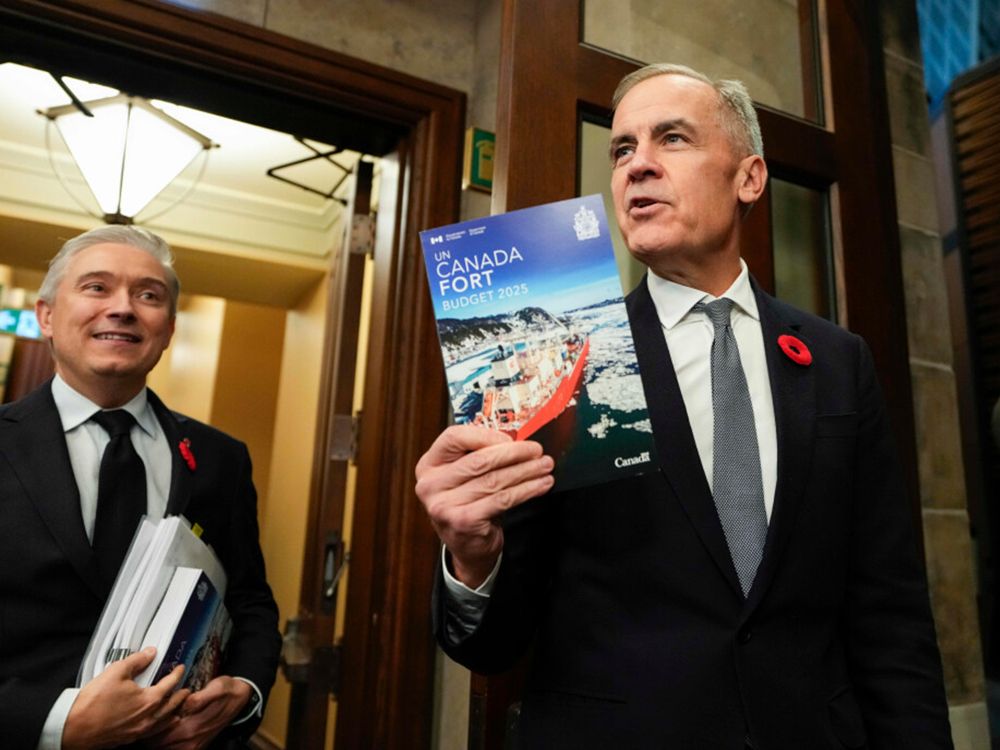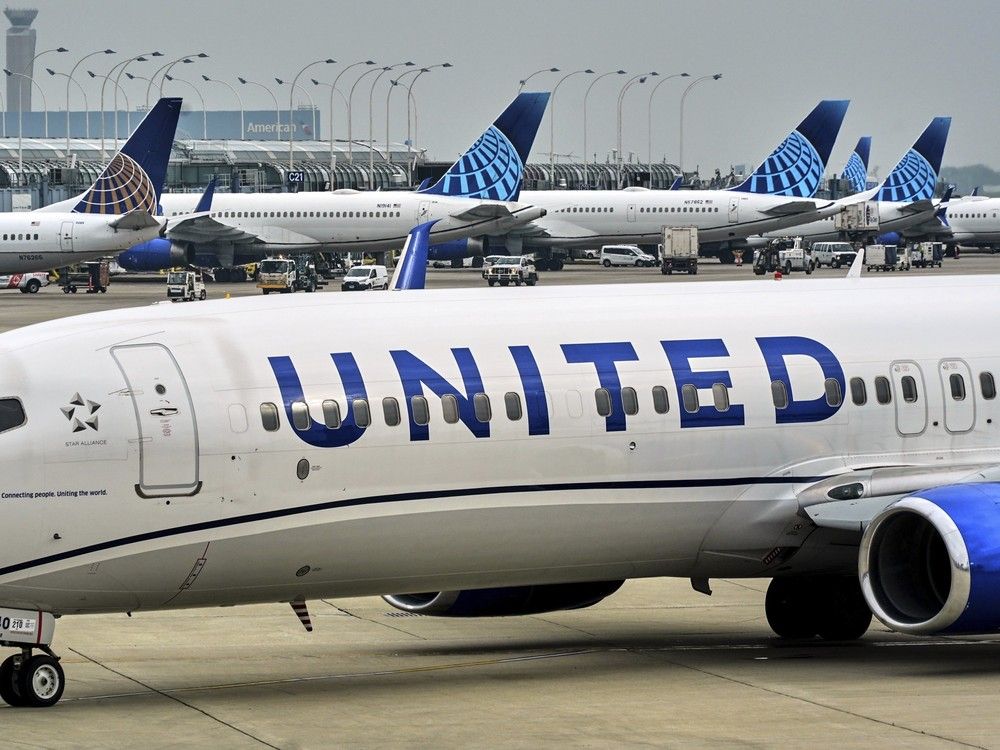
Reviews and recommendations are unbiased and products are independently selected. Postmedia may earn an affiliate commission from purchases made through links on this page.
In Canada, when a doctor hands you a prescription, you trust that what’s been recommended is the best drug for your health. What you can’t know is whether your physician has benefited financially from a relationship with the company that made the drug — and whether that relationship has affected the drug advice you got.
While several countries mandate that pharmaceutical companies must publish all monetary transactions to doctors, Canada has no such system of public accountability. Eight years after a failed attempt in Ontario to fix this through legislation, there’s been little progress toward effective public reporting of doctor-drug company relationships in this country.
The
Investigative Journalism Bureau
consulted a public registry in the United States for information about 22 Canadian doctors, each licensed to practise south of the border, who received funds from drug companies
or are linked to funds given by drug companies. No equivalent registry exists here.
Pharmaceutical and medical device companies say partnerships with health-care providers often help in the development of new drugs, clinical research and education. But some experts say these relationships can lead to conflicts which can be subtle, systemic and influence decision-making over time.
“It’s quite frankly startling that we don’t have this element of transparency in our health-care system,” Dr. Andrew Boozary, cofounder of the Open Pharma campaign and a primary care physician at St. Michael’s Hospital in Toronto, told the
.
“Fundamentally, patients deserve to know, when they’re making shared decisions in a patient-physician relationship, about even the potential for conflict of interest.”

In some cases, conflicts can cause waste, over-prescribing or even direct harm to patients. For example:
In 2018, a study in the
Journal of the American Medical Association
found that each free meal received by physicians from a drug manufacturer was associated with an increasing number of claims to Medicaid for opioid prescriptions.
A 2021
of 36 studies on the links between industry payments to doctors and physician prescribing found a strong “causal relationship,” resulting in “increased prescribing of the paying company’s drug, increased prescribing costs, and increased prescribing of branded drugs.”
A study published in the
in 2023 concluded that oncologists who received payments from pharmaceutical companies prescribed more non-recommended or less effective treatments than did doctors not receiving those payments. “These findings raise quality of care concerns about the financial relationships between physicians and industry,” the study concluded.
While explicit influence techniques — such as providing doctors with luxurious dinners or trips to exotic locales —
, industry still pays consultancy fees for drug development, and provides free drug samples, research funding and educational opportunities.
Doctors’ associations have been worried enough about potential conflicts to publish explicit guidelines. For example, the
College of Physicians and Surgeons of Ontario
, while noting that “interactions between physicians and industry have the potential to benefit both physicians and patients,” also says “Physicians must maintain their clinical objectivity and professional independence in all interactions with industry and when making decisions regarding patient care.
“Physicians must identify situations or circumstances that are, may reasonably be perceived to be, or may lead to, a conflict of interest … Physicians must avoid these situations or circumstances where possible.”
Still, questions about transparency remain. Whether it comes via paid conferences, consulting boards or clinical trials, pharmacy companies can have an “insidious” influence over physicians, says former CEO of the College of Family Physicians of Canada Dr. Francine Lemire.
Lemire suspects patients are generally not aware of pharma-physician relationships, which are “quite common,” she said.
“When doctors take free samples from drug companies, when they take gifts from drug companies, when they serve on advisory boards of drug companies … overwhelmingly, it’s going to lead to prescribing getting worse,” said Dr. Joel Lexchin, a leading expert on pharmaceutical policies and the
examining the relationship Canadian doctors and policymakers have with pharmaceutical manufacturers.
In some cases, he said, it means “patients are suffering.”
Regulating physicians is not a federal responsibility, Health Canada spokesperson Karine LeBlanc said. Requests for comment to the Ontario Ministry of Health and Minister of Health Sylvia Jones received no response.

Innovative Medicines Canada, the national association representing pharmaceutical companies, also did not respond to questions about industry influence on doctors and the lack of public disclosure around payments.
***
In the U.S., unlike in Canada, patients can see details of payments received by physicians from drug companies by simply running their doctor’s name through a
.
Some Canadian doctors with medical licences in the U.S. are captured in the data. Payments recorded in the database to Canadian physicians range from $13 for food and beverages to US$150,000 in research funding.
Between 2018 and 2024, records show 22 physicians licensed in Canada received more than US$500 in payments within a single year from drug and medical device companies, including AbbVie, Arthrex and Allergan, for travel and lodging, research and consulting fees.
Among them, the IJB found 10 payments from pharma and medical companies to Canadian-licensed physicians that were wholly or partially dedicated to covering “travel and lodging.” Six payments were made for “consulting fees,” which the Open Payments database defines as “a payment that a company makes to a physician for advice and expertise about a medical product or treatment.”
According to the database, in 2023, Rosalyn Juergens, a doctor from Hamilton, Ont., received more than US$16,000 for consulting fees from Hoffmann-La Roche Limited, a pharmaceutical company responsible for producing cancer and anemia treatments.
Montreal physician Michael Tanzer received more than US$7,000 in 2024 in consulting fees as well as travel and lodging from Stryker Corporation, a medical devices and equipment company, the database shows.
The IJB reached out to Tanzer and Juergens for comment about these payments but did not receive a response.
The IJB also reached out to the companies from whom the physicians were reported to have received payments.
Hoffmann-La Roche spokesperson Laura Pagnotta said in a statement that the payments were made to Juergens “for a number of engagements where she provided insights that support our shared interests in advancing patient care.
“For privacy and business reasons, we do not disclose details of such engagements; however, I can confirm that we are confident in the propriety of these engagements,” the statement said.
Stryker did not disclose contract-specific details. But a statement to the IJB from company spokesperson Jenny Braga said, “the healthcare community plays an essential role in the advancement of medical technology that improves patient lives. We collaborate with healthcare professionals to provide clinical insight on innovation and support education on the safe and effective use of our products.”
Jillian Kohler at the University of Toronto’s Leslie Dan Faculty of Pharmacy, said there is tension between industry’s contributions to education and its influence on prescribers.

“The health-care industry will always come up with its own arguments as to why they need to educate health professionals … The question is, do you really need to educate people in super expensive restaurants and pay their way for luxury trips? That’s not education, that’s influencing, even if it is disclosed.”
***
It’s not a simple issue to address. Despite concerns among transparency activists about the opaque role played by pharmaceutical companies, some experts say private industry fills funding gaps for necessary research.
While the Ontario Medical Association supports greater transparency, pharmaceutical industry investments “support public health care by funding and offsetting costs associated with research, continuing education and medical equipment,” OMA spokesperson Mirna Trogrlic said in a statement.
“Presently, public funds aren’t enough to support these important investments to Ontario’s health-care system.”
In some cases, industry payments to Canadian doctors that are recorded in the U.S. database have funded scientific research.
Last year, these records show, Toronto doctor Adrian Sacher received, or was linked to, US$70,000 for “associated research funding” from GlaxoSmithKline, a company that makes vaccines and specialty medicines for cancer, HIV and infectious diseases.
In a response to questions sent by the IJB, Sacher said the funds were paid not to him, but to his institution. He said he has worked at the Princess Margaret Cancer Centre, a facility run by the University Health Network (UHN), since 2018 on developing new therapies for lung cancer and other solid tumours.
He told the IJB he has led many clinical trials as the principal investigator “where the sponsor of the trial is a drug development company.”
He said he does not take personal fees or payment from pharmaceutical companies for this work, and discloses these relationships in accordance with policies set by UHN and the University of Toronto, where UHN is affiliated.
UHN said in an unattributed statement that the funds paid by GlaxoSmithKline were deposited in a research account, which covered the administrative costs of conducting the study.
“Industry supports a significant number of trials and research that bring new treatments to patients,” the statement added. “UHN also has a robust disclosure and relationship management program to mitigate any potential, perceived or actual conflicts of interest.”

In 2024, a pediatric respirology specialist from Saskatoon, Dr. Martha Louise McKinney, was named a recipient of or linked to $150,000 in research funding from Vertex Pharmaceuticals.
McKinney told the IJB the end-receiver of the grant was Children’s Hospital Los Angeles (CHLA). “The vast majority of the funds went directly to research expenses,” according to a statement from the public relations team at the CHLA on McKinney’s behalf.
“A small portion of the grant supported Dr. McKinney’s salary,” the statement added. “The amount of salary support was directly related to work time spent on study-related activities; it was not an additional stipend or payment.”
The grant was used to support a clinical trial evaluating the long-term safety and efficacy of new combination treatments of cystic fibrosis (CF) — a trial of which McKinney was the principal investigator.
“Since these therapies have become available, disease severity, lung function, rates of pulmonary exacerbation, hospitalization, and lung transplantation have decreased markedly in people with CF, a serious, life shortening genetic disease,” said McKinney”s statement.
Toronto physician and health policy scholar Dr. Danyaal Raza says the health-care industry’s reliance on pharma money for research and education is “a deep indictment of our health-care system.”
“Patients need to understand the consequences and the effects when health-care workers and when doctors are financially conflicted and how that can influence their care,” he said. “My view is actually we should just have a prohibition on these sorts of payments … If we’re not going to give a prohibition then we should at least give people the information so that they can choose.”
Alberta physician and social-media influencer Dr. Shazma Mithani said industry-sponsored conferences can be valuable for sharing information on rare diseases that don’t get government funding.
“Sometimes, the only way for physicians to get paid for their time in presenting this information is to be paid by a pharmaceutical company,” Mithani said.

But Mithani said she has a “very firm boundary” about not partnering with pharmaceutical companies on the social media content she creates. “It’s important for me to maintain credibility as a physician and for us to maintain credibility as a group. And one of the big holes that can be poked in that is partnering with pharmaceutical industries.”
The
’s (CMA) guidelines for physicians with a financial interest in the health-care industry say they must disclose these affiliations to patients.
“The CMA believes that physicians must disclose all relevant relationships with industry and real or perceived conflicts of interest in a way that is obvious to any relevant audience,” CMA president Dr. Margot Burnell said in a statement.
While she called the question of transparency legislation “fair,” she urged vigorous consultation with health-care professionals “to ensure there are no unintended consequences.”
***
U.S.-style transparency rules exist in many countries.
The Danish Health Act prohibits doctors, nurses, midwives, dentists and pharmacists from affiliating with pharmaceutical companies unless such affiliations are disclosed. Belgium has its own
, mandating drug companies to annually disclose payments to health-care practitioners.
In France, the so-called
emerged in 2011 after a drug which had been purged from the market in other countries continued off-label marketing in France, leading to an estimated 500 to 2,000 deaths. Investigations into how the drug managed to stay on the French market for so long implicated government officials for having undisclosed financial stakes in the drug company. To protect French patients from undisclosed conflicts of interest, new laws made public all payments to health professionals exceeding 10 euros.
In Canada, efforts at similar transparency have fizzled.
Former Ontario health minister Eric Hoskins introduced Bill 160, known as the Strengthening Quality and Accountability for Patients Act, in Ontario at the end of September 2017, with the Liberals in power. The Bill contained an Act called the Health Sector Payment Transparency Act.
“We know that payments from private industry can influence, and do influence from time to time, professional judgment and decisions,” Hoskins, who is a physician,
. “These … can lead, in some cases, to inappropriate prescribing or biased decision-making within the health sector.”
Among pharmaceutical industry giants, there was an immediate flurry of lobbying efforts surrounding the Transparency Act.
Bill 160 (and the Transparency Act within it) passed. But while much of it was put into practice, the Transparency Act itself was never implemented. The reasons aren’t clear.
Ontario’s lobbying registry shows that in the first few months after the Quality and Accountability Act was passed, there were 10 lobbying updates posted from major pharmaceutical and medical companies and the Ontario Pharmacists’ Association (OPA) that specifically referenced that they were “closely following” the Act, sought amendments to it or wanted to limit the increased “regulatory burden” the Act could potentially bring.
In April 2018, the OPA warned the government of the administrative burden of the Act’s proposed regulations, including the need to hire additional staff to track and report payments to health-care professionals.
The transparency part of the legislation fell off the table after the 2018 election that brought the Progressive Conservatives to power. Since then, it has disappeared from the headlines and remains lifeless.
“It was really frustrating for many of us because, again, this was about protecting science, the public effort to keep people safe,” said Boozary, who spent years advocating for payment transparency.
Provincial NDP health critic France Gelinas said she will raise the question of enforcing the 2017 Act in her next order paper question to the health minister.
“We know that it needs to be done,” Gelinas said.
Attempts at industry self-regulation to bring greater transparency around payments to physicians have fallen short.
In 2017, the Canadian arms of 10 pharmaceutical companies elected to voluntarily disclose the aggregated sums paid to health-care professionals, retroactive to 2016. In the intervening years, these disclosures have been spotty.
But according to a
published in Healthcare Policy, from 2016 to 2020, “10 companies reported spending almost $345 million” in three categories: fees for services from health-care providers; payments to health-care organizations; or travel payments for health-care providers.
“The largest payments were to health-care providers,” he noted.
The 2024 disclosures of only five of the 10 companies are publicly available through their websites at the time of publication. Two other companies said their 2024 reports have not yet been published. Another two did not respond to inquiries about their voluntary disclosures.
GlaxoSmithKline, the 10th company in the voluntary disclosure program, stands out for its efforts on this front,
not just aggregated sums, but also payments made to individual Canadian physicians on its website. For 2024, these individual payments ranged from a few hundred dollars to just over $57,000.
Health-care providers paid by GlaxoSmithKline can withdraw their consent to disclose this information in this registry.
— With files from Rhythm Sachdeva, Robert Cribb and Shaki Sutharsan
The Investigative Journalism Bureau (IJB) at the University of Toronto’s Dalla Lana School of Public Health is a collaborative investigative newsroom supported by Postmedia that partners with academics, researchers and journalists while training the next generation of investigative reporters.
Our website is the place for the latest breaking news, exclusive scoops, longreads and provocative commentary. Please bookmark nationalpost.com and sign up for our newsletters here.


















